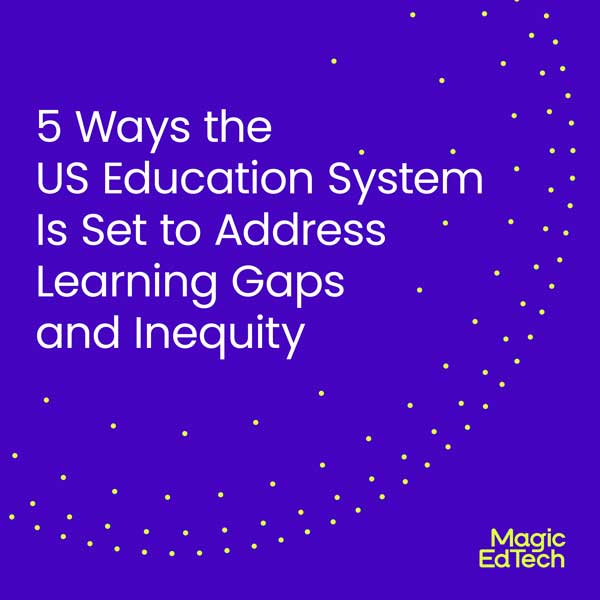The Role of Simulations in the Learning Journey
- 7 October, 2022
- Reading Time: 4 minutes
Simulations are an important tool within the classroom thanks to their engaging nature. They offer an entirely immersive, dynamic, and hands-on experience. These experiences not only develop students’ skills but also teach them how to successfully apply those skills in many different situations.
What can simulations offer learners?
For starters, simulations have a way of making children learn through exploration without realizing that they are learning. This format of learning helps them internalize knowledge more naturally.
Simulations, on the whole, improve students’ critical thinking skills and empower their understanding of a variety of subjects. By presenting different scenarios, simulations give students more paths to learn and absorb the material in the way they learn best.
They are appropriate for all levels of education – which makes them commonplace in school laboratories as well as higher levels like business schools. They’re popular because they offer a safe space for students to fail, experience negative results, and try again without facing the serious consequences of that scenario if it were to unfold in real life.
The unique way in which students utilize their knowledge and practice their skills while learning through sims enables teachers to assess them accurately. Simulations increase teaching efficiency by making it easier to manage, record, and assess learning activities. This can help in detecting any learning issues early, and teachers can then calibrate the simulation to enhance learning.
How does simulation as a learning delivery mechanism differ from others?
Simulations act as a replication of a particular situation or environment which is very different from any other type of learning. They emphasize the development of problem-solving and decision-making skills through the exploration of scenarios. They then survey the results of these decisions, which other learning delivery mechanisms such as asynchronous learning or even games do not.
Simulations are also unique in the fact that there are no winners or losers like in game-based learning. This idea of “I won and you lost” could be very discouraging to students and potentially leave them feeling doubtful about their knowledge of the subject. Simulations unlike games have no end, so the student can continue to practice and learn as much as they’d like, whereas in games, when the game ends there is typically no way to go back and redo a specific portion or lesson.
Simulations, unlike asynchronous e-learning, enable students to engage in deep learning, meaning they have substance behind their knowledge rather than superficial learning which focuses purely on memorization. It brings learning to life where textbooks or traditional online learning often fall short.
When should you prefer a simulation over other learning delivery mechanisms?
A study found on Springer Link shows that simulations promote a high level of engagement and satisfaction among students when learning a variety of science subjects. This study also found that simulations contribute to students’ self-confidence surrounding learning and the simulations were able to cater to each learner’s needs with a particular advantage to students who excel using Kinesthetic style learning.
They should also be used to assess students’ knowledge in order to avoid testing anxiety, language barriers when English is a second language, or reading comprehension. Many students struggle to succeed on traditional tests such as multiple choice, so this alternative path can assist in removing stress barriers from the student while still demonstrating their knowledge so the teacher can better understand what skills the students have absorbed and where they may need extra practice or support. When teaching a student whose primary language is not English, the imagery and audio provided within a simulation can help them to understand the concept better than if it were being presented on a more traditional test.
How to ensure simulations tie into your learning journey?
Some designers and educators turn away from simulations because of cost. It’s true, when simulations were introduced, developing and implementing them was very costly. Much of the initial high costs of simulations was due to creation and development, luckily now there are some more flexible ways to bring this cost down and make it more attainable to administer. Frameworks are one way to assist in mitigating some of these costs. Using a pre-built framework can help to expedite the development process, which in turn, can drive down costs.
Simulations are in fact quite cost-effective in the long run due to the amount of learning that can happen for all students via simulations and the minimal maintenance that they require. In fact, they can potentially be profitable if you are an institution within higher education. Very often, medical schools train learners using simulations. It allows students to all train at the same time, something that is difficult to do using traditional medical training with a limited number of models.
Simulations also allow medical students to practice skills as many times as it takes for that skill to be mastered, which isn’t necessarily an option if a student were practicing in a classroom with a limited time frame. For all of these reasons, simulations are an incredibly worthwhile investment for k-12, higher education institutions, and even corporate learning.
In conclusion,
Overall, simulations are an incredible tool within the classroom. They promote the development of critical thinking and decision-making skills, unlike some other learning tools, all while keeping students engaged and satisfied with the learning process. Simulations assist in removing barriers for students whether it be testing anxiety or language barriers and are an absolutely worthwhile investment for any educational institution.






